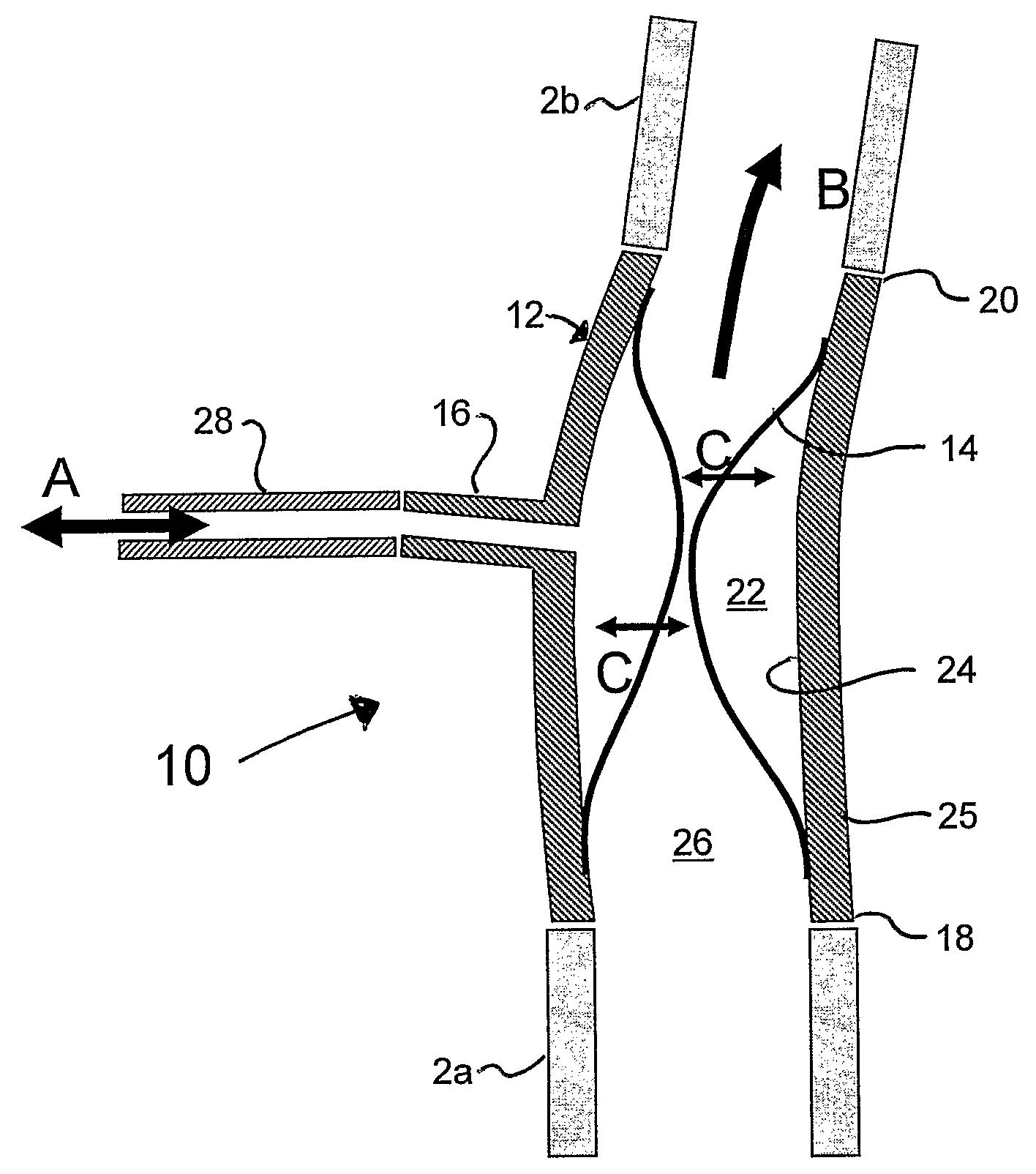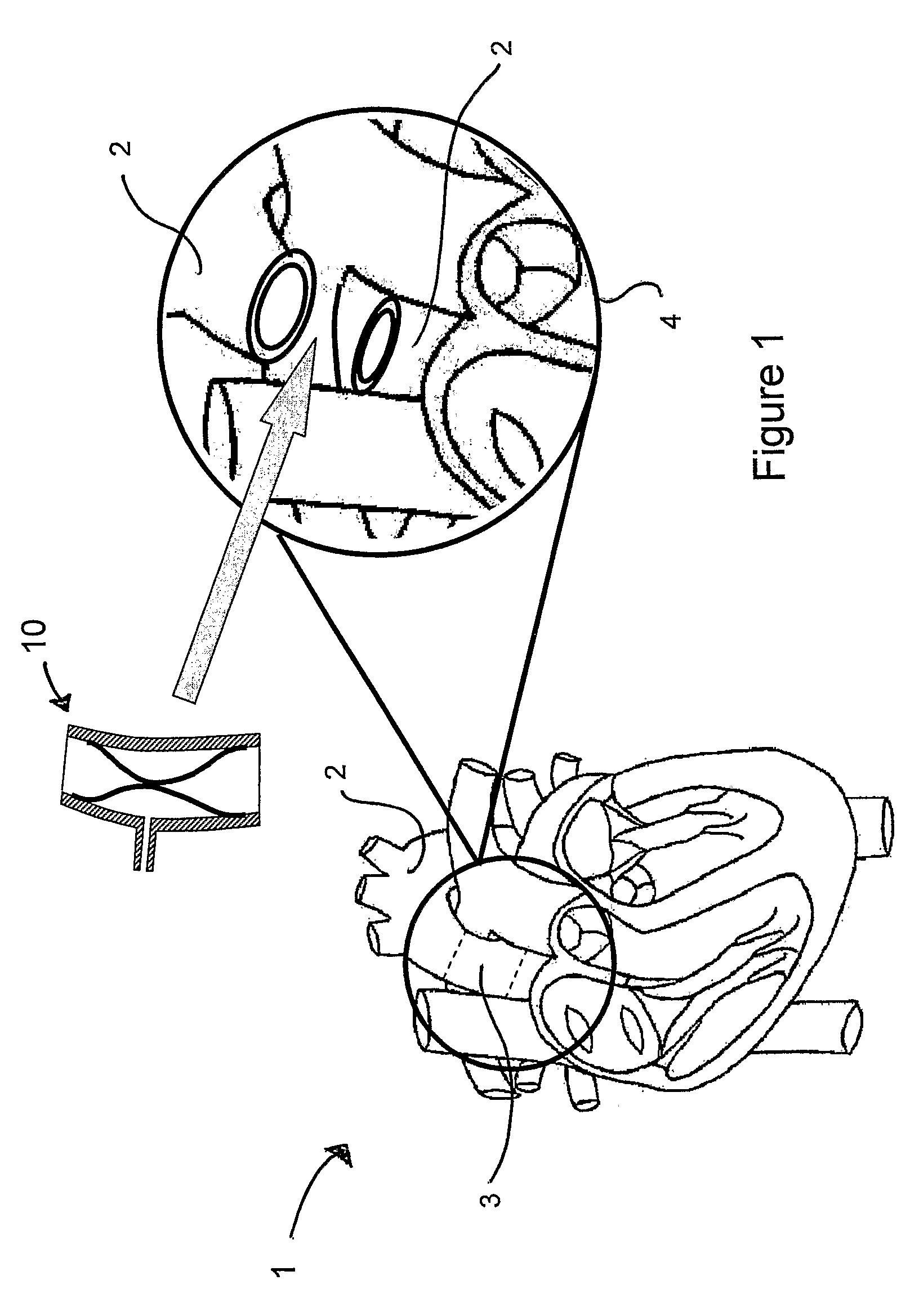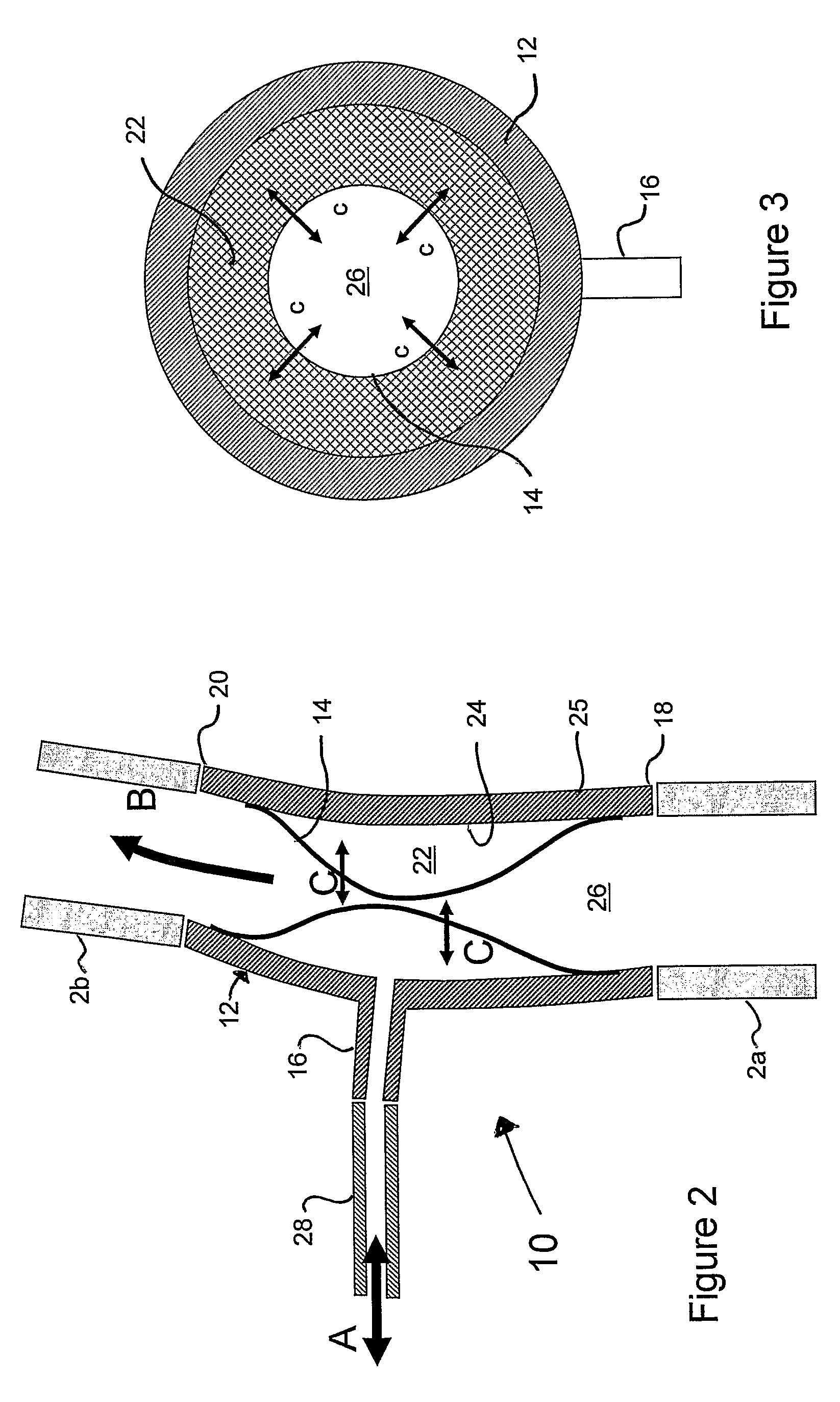Pulsatile blood pump
a technology of pulsatile blood and pump, which is applied in the direction of heart stimulators, prostheses, therapy, etc., can solve the problems of inability to leave the current lvads in-situ and deactivation, and the current lvads do not provide a life-line to recovered patients, so as to improve the perfusion of patients' limbs, organs and/or tissues
- Summary
- Abstract
- Description
- Claims
- Application Information
AI Technical Summary
Benefits of technology
Problems solved by technology
Method used
Image
Examples
Embodiment Construction
[0047]FIG. 1 shows a schematic representation of a human heart 1. A healthy heart 1 pumps blood to the body via the aorta 2. According to a preferred embodiment of the present invention, a portion 3 of the aorta 2 is resected, as shown in the enlarged view 4 of FIG. 1, and replaced by a pulsatile blood pump 10 placed interpositionally within the aorta 2 just distal of the aortic root and the remainder of the heart 1. The blood pump 10 may then be activated intermittently for short periods as required, or may be activated continuously for periods of limited duration. Therefore, this embodiment of the present invention provides a small pulsatile blood pump 10 having a volume of between 10 and 70 mL which may be permanently incorporated into the aorta 2 as an interpositional graft. In order to place the blood pump 10 in its desired position close to the heart 1, a section 3 of the aorta 2 must be removed. Thus, the blood pump 10 is positioned in the aorta 2 by end-to-end anastomosis (i...
PUM
 Login to View More
Login to View More Abstract
Description
Claims
Application Information
 Login to View More
Login to View More - R&D
- Intellectual Property
- Life Sciences
- Materials
- Tech Scout
- Unparalleled Data Quality
- Higher Quality Content
- 60% Fewer Hallucinations
Browse by: Latest US Patents, China's latest patents, Technical Efficacy Thesaurus, Application Domain, Technology Topic, Popular Technical Reports.
© 2025 PatSnap. All rights reserved.Legal|Privacy policy|Modern Slavery Act Transparency Statement|Sitemap|About US| Contact US: help@patsnap.com



